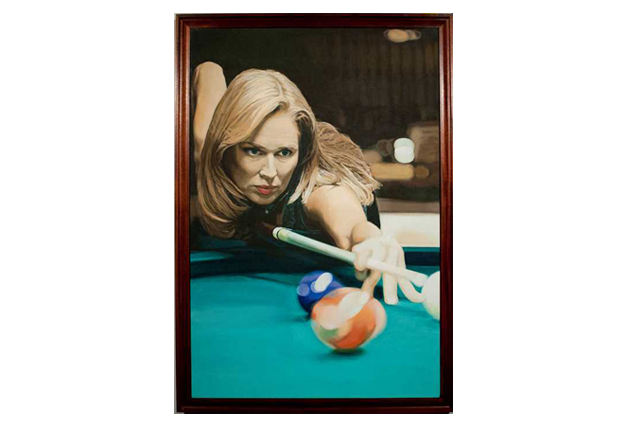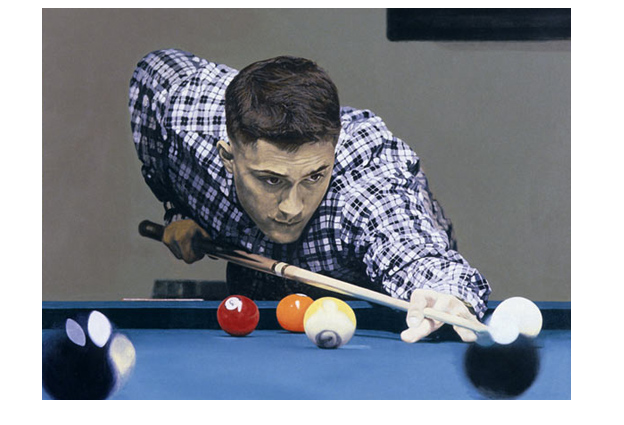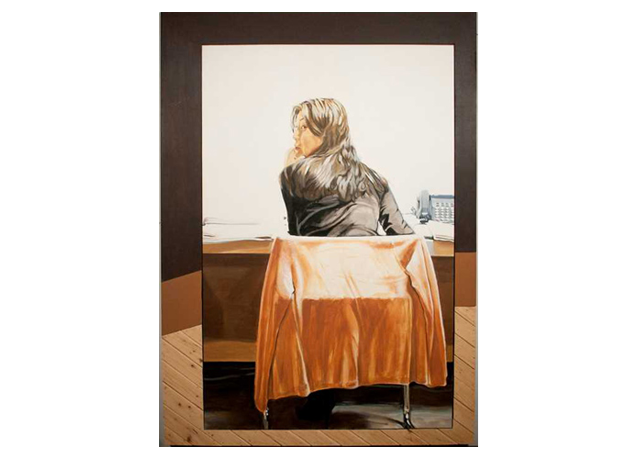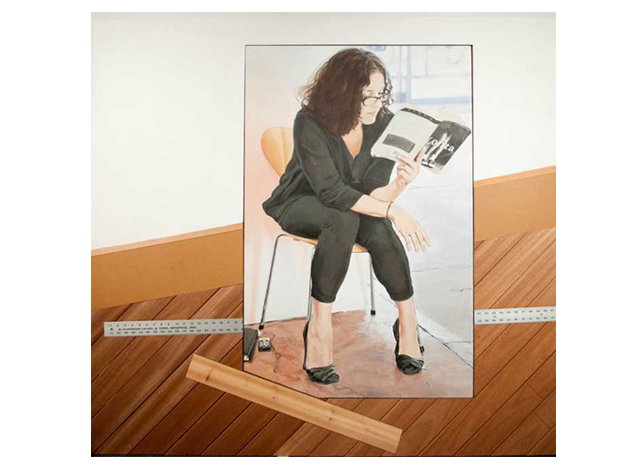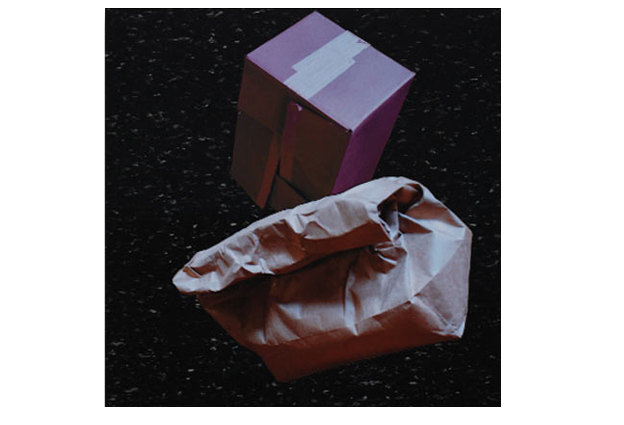- Apply
- Visit
- Request Info
- Give
Published on June 03, 2020
Interview with Tom Hebert

Tom Hébert is an American artist who has been teaching for over 35 years. He earned his BFA at University of Connecticut and his MFA at Central Connecticut State University. Tom has had numerous one person shows in New England, and has exhibited at O.K. Harris Works of Art, and at Exit Art, both in New York City. Hebert has been a Adjunct Professor at Eastern Connecticut State University for the past 15 years. Viewing his work in the Student Center is what sparked the need for the interview.
When I asked Hébert what inspired him to create his Pool Player series of paintings, he took me on a long story back to his time as a student at UConn. He was a pool shooter. He told me he used to skip school to play pool at the Worcester Pool Club in Hartford. Even traveling to New York City to watch the professionals play, and coincidentally where they filmed the movie Hustler.1 The Pool Players were accepted for an exhibition at the O.K. Harris Gallery in 1980s, one of oldest galleries in NYC that also represented Andy Warhol.
This was one of his first canvasses he made of a professional player that he met and set a photoshoot with. Hébert explained that in some instances he would be around six or eight of these professionals, something he never would have dreamt of.
Hebert said “There were instances where I approached them, and they were practically growling at me with their game face on”. I would say to the player, “My names Tom Hébert and I’m the guy that did the paintings on the wall. And they would just soften up ‘ohh so nice to meet you!’ you know?”
When I asked Hébert about his thirty-odd years of teaching, he told me he initially did not want to go into teaching. At the time he was part of that artists group, the same Hartford/New York crowd that just wanted to see how far they could go doing their art. Finding sort of a calling, uniqueness for themselves. Hébert also knew that he his artists-peers influenced him. Instead he wanted to find his own unique style.
Hébert exhibited in various galleries before Lula Mae Blocton, ECSU’s professor of art and the artist herself, asked him if he wanted to teach at Eastern. However, at that time Hébert did not have his MFA degree, so he had to go back to school. Hébert went to Central CSU, where he earned his MFA in Stone Lithography. His studio was at his firehouse converted home on Summit street in Willimantic.
When I asked Hébert about his multimedia painting, Waiting for a Cue and what is this young woman waiting on? Tom said that her name was Sara Hull, the gallery assistant at Paul Kasmin gallery, NYC. At that time, Hébert developed an interest in depicting people who worked for the big art dealers, the people you never hear about in the papers or on the news. Hull was waiting for Paul Kasmin to tell her something, and that was the expression that Tom captured in his piece.
Works Cited
Hebert, Tom. “TomHebertArtist.com.” Tom Hebert Fine Artist, www.tomhebertartist.com/contact.html.
Hebert, Tom. “Collections.” Tom Hebert Fine Artist, tomhebertartist.com/collections.html.
1The Hustler (1961) American drama, directed by Robert Rossen. It tells the story of small-time pool hustler "Fast Eddie" Felson and his desire to break into the "major league" of professional hustling and high-stakes wagering. He throws his raw talent and ambition up against the best player in the country, seeking to best the legendary pool player "Minnesota Fats". The film was shot on location in New York City and stars Paul Newman as "Fast" Eddie Felson; Jackie Gleason as Minnesota Fats. The Hustler was a major critical and popular success, gaining a reputation as a modern classic. Its exploration of winning, losing, and character garnered a number of major awards; it is also credited with helping to spark a resurgence in the popularity of pool.


